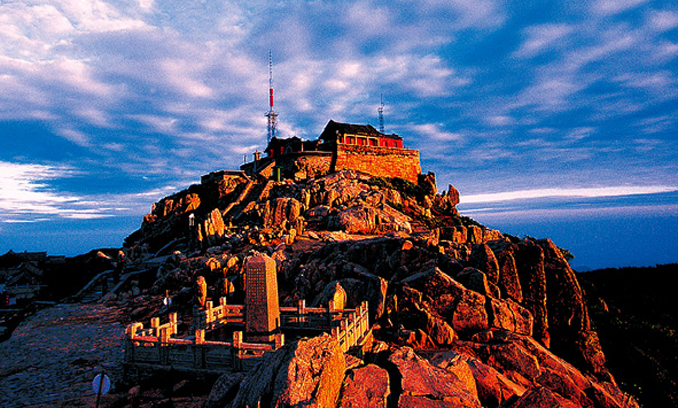Mount Tai Travel Guide: Climb One of China’s Five Great Mountains
Introduction to Mount Tai
Rising majestically above the Shandong plains, Mount Tai (Tai Shan) has inspired emperors, poets, monks, and philosophers for over 3,000 years. Considered the most sacred of China’s Five Great Mountains, it has served as a site of imperial worship and Daoist enlightenment, offering both spiritual depth and natural splendor.

Today, Mount Tai is a UNESCO World Heritage Site and a pilgrimage destination for those seeking breathtaking views, cultural immersion, and a brush with China's spiritual soul.
📖 The Cultural Significance of Mount Tai
Mount Tai has been a symbol of stability, imperial power, and eternal life for millennia. Ancient emperors climbed the mountain to perform fengshan ceremonies, asking for blessings from the heavens. Confucius once said, “When climbing Mount Tai, the world seems small,” highlighting its awe-inspiring grandeur.
Key Cultural Highlights:
Fengshan Sacrifices by emperors (notably Qin Shi Huang and Han Wu Di)
Daoist and Confucian temples
Stone inscriptions carved by famous scholars and emperors
Recognized as the “First Mountain under Heaven”
🗺️ How to Get to Mount Tai
Closest City: Tai’an, Shandong Province
By Train:
From Beijing: 2.5–3 hours (high-speed train to Tai’an Station)
From Shanghai: 3.5–4 hours
From Qufu (Confucius’ hometown): 1 hour
From Tai’an to Mount Tai:
Local buses and taxis to Red Gate (Hongmen) or Tianwai Village (Tianwaicun)
Cable car access from Zhongtian Gate
🥾 Hiking Routes Up Mount Tai
There are several routes up Mount Tai, ranging from traditional pilgrim paths to modern cable cars. Choose based on your fitness level, time, and interest in hiking.
1. Hongmen Trail (Traditional Route)
Start: Red Gate (Hongmen)
Length: ~6.5 km (~4 miles)
Stairs: Over 6,000 stone steps
Time: 4–6 hours
Key Stops: Doumu Palace, Halfway Gate to Heaven, South Heaven Gate
🏞️ Most popular and scenic route, with centuries-old temples and inscriptions along the way.
2. Tianzhufeng Trail (Peach Blossom Ravine)
Start: Tianzhufeng Scenic Area
More natural and less crowded
More vegetation and shade, fewer cultural relics
Also leads to the summit via cable car or hiking
3. Cable Car Option
Start: Tianwai Village → Bus → Zhongtian Gate → Cable car to South Heaven Gate
Fastest way to the summit
Ideal for those with limited time or mobility
🚠 Perfect for sunrise/sunset visits without the full climb.
🏞️ What to See at Mount Tai
1. Red Gate (Hongmen)
Starting point of the traditional pilgrimage route
Historic gate surrounded by pine trees and mountain spirits
2. Doumu Palace
One of the earliest temples on the trail
Dedicated to the Mother of the Big Dipper (Doumu)
3. Halfway Gate to Heaven (Zhongtianmen)
Midpoint of the ascent
You’ll see the famous carved rock: “Climb Mount Tai and All Under Heaven Is Small”
4. South Heaven Gate (Nantianmen)
Entrance to the summit
Towering gate and popular photo spot
5. Jade Emperor Peak (Yuhuang Ding)
The highest point of Mount Tai at 1,545 meters (5,069 feet)
Home to the Temple of the Jade Emperor, offering panoramic views
6. Bixia Temple (Bixia Yuanjun)
Dedicated to the Princess of the Azure Clouds
Popular with pilgrims seeking blessings for fertility and family
🌄 Best Time to Visit Mount Tai
🗓️ Seasons:
Spring (April–June): Pleasant temperatures, blooming flora
Autumn (September–October): Clear skies and stunning fall foliage
Summer (July–August): Green landscape, but can be hot and crowded
Winter (December–February): Snow-covered temples, fewer tourists
🌅 Sunrise at Mount Tai
Many travelers choose to stay overnight on the mountain to watch the sunrise
The sunrise from Jade Emperor Peak is legendary
Bring warm clothes—even in summer, it’s cold at the top before dawn
🏨 Where to Stay on or Near Mount Tai
On the Mountain:
Yuhuangding Hotel – Near the summit, great for sunrise access
Shengtai Hotel – Basic but convenient
Limited amenities; bring snacks and warm clothing
In Tai’an City:
Ramada Plaza by Wyndham Tai’an – 4-star, comfortable
Four Points by Sheraton Tai’an – Great for international visitors
Budget hostels near the Red Gate for hikers
🧭 Tips for Visiting Mount Tai
🥾 Wear sturdy shoes – thousands of stone steps can be hard on knees
🧥 Dress in layers – temperatures drop significantly near the summit
💡 Start early – if hiking, begin before 8 AM to reach the top before dark
🥤 Bring water and snacks – food prices increase as you ascend
📱 Download offline maps or use Baidu Maps
🕯️ Respect the temples and local customs—many visitors are on pilgrimage
🎟️ Tickets and Entrance Fees
| Area | Adult Ticket | Notes |
|---|---|---|
| Mount Tai Scenic Area | ¥115–145 | Includes entrance to trail and cultural sites |
| Cable Car | ¥100 (one way) | Zhongtian Gate to South Heaven Gate |
| Shuttle Bus | ¥30 | Tianwai Village to Zhongtian Gate |
| Sunrise Viewing Platform | ¥30 | Optional fee at summit |
🎟️ Combo tickets available. Student, child, and senior discounts offered with valid ID.
📸 Photography Tips
📍 Best photo spots: Red Gate, South Heaven Gate, Jade Emperor Peak
🌅 Use a tripod for sunrise shots
🎨 Look for stone carvings, ancient pines, and temple rooftops
🌫️ Misty mornings add an ethereal, mythical feel to your photos
🧳 Packing List for Mount Tai
Hiking boots or trail shoes
Lightweight jacket or raincoat
Snacks and bottled water
Headlamp or flashlight (for sunrise/sunset trips)
Sunscreen and hat (for summer)
Portable charger
🌟 Why Visit Mount Tai?
Mount Tai is not just a mountain—it’s a living museum of Chinese civilization, a spiritual sanctuary, and a physically rewarding hike. Whether you’re a nature lover, history buff, or seeker of spiritual energy, Mount Tai offers a deeply meaningful and visually breathtaking journey into China’s heart and heritage.
You’ll walk in the footsteps of emperors, pass through ancient gates, and gaze across the heavens from the roof of eastern China.
